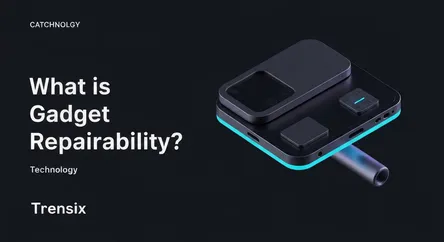Technology
What is Gadget Repairability?

Discover the growing trend of repairability in gadgets. Learn why the Right to Repair movement is gaining traction and how it affects you.
What is it?
Repairability refers to how easily a device can be repaired by consumers or independent technicians. It's a measure of a product's design, considering factors like the availability of spare parts, access to repair manuals, and the use of non-proprietary tools for disassembly. Highly repairable gadgets, like modular phones or laptops with user-replaceable batteries, stand in contrast to devices that are glued shut, use custom screws, or have components soldered together, making fixes difficult or impossible.
Why is it trending?
The concept is gaining momentum due to the global "Right to Repair" movement. Consumers are increasingly frustrated with expensive manufacturer-led repairs and planned obsolescence, where products are designed to have a short lifespan. This pushback is fueled by growing environmental concerns over electronic waste (e-waste), one of the fastest-growing waste streams. As a result, governments worldwide are beginning to introduce legislation that mandates manufacturers make their products easier to fix, leading to repairability scores and new design philosophies.
How does it affect people?
Greater repairability directly empowers consumers, allowing them to save significant money by extending the life of their devices instead of replacing them. It reduces environmental impact by minimizing e-waste and conserving the resources needed to build new products. This shift fosters a more sustainable culture, giving people more control over the technology they own and encouraging a deeper understanding of how their gadgets work. It supports local repair businesses and creates a more circular economy.